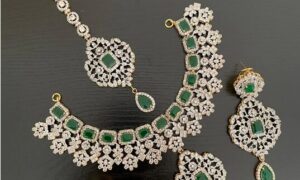Introduction
Jewelry has always been a symbol of beauty, status, and personal expression. From the intricate craftsmanship of ancient civilizations to the sleek designs of contemporary pieces, the art of jewelry making has continuously evolved. In the modern era, technology has become a pivotal force driving this evolution. From design and prototyping to production and marketing, technological advancements have revolutionized the jewelry industry, enhancing precision, creativity, and efficiency.
Computer-Aided Design (CAD) and 3D Modeling
One of the most significant technological advancements in jewelry manufacturing is the adoption of Computer-Aided Design (CAD) and 3D modeling. CAD software allows designers to create detailed digital models of jewelry pieces, offering a high level of precision and flexibility. These digital designs can be easily modified, enabling designers to experiment with different styles, materials, and sizes without the need for physical prototypes.
3D modeling takes this a step further by creating realistic, three-dimensional representations of the jewelry. This technology allows for the visualization of the final product from all angles, helping designers and customers alike to better understand the piece before it is physically created. The combination of CAD and 3D modeling streamlines the design process, reduces errors, and significantly shortens the time from concept to final product.
3D Printing and Rapid Prototyping
The advent of 3D printing has been a game-changer in the jewelry manufacturing industry in india. This technology enables the creation of highly detailed and intricate designs that would be difficult, if not impossible, to achieve through traditional manufacturing methods. 3D printing, also known as additive manufacturing, builds jewelry layer by layer from materials such as wax, resin, or even precious metals.
Rapid prototyping with 3D printing allows jewelers to produce prototypes quickly and cost-effectively. These prototypes can be used to test designs, fit, and functionality before committing to full-scale production. This not only reduces material waste but also ensures that the final product meets the desired specifications. Furthermore, 3D printing opens up new possibilities for customization, allowing customers to create unique, personalized pieces.
Laser Technology
Laser technology has also made a significant impact on modern jewelry manufacturing. Laser cutting and engraving are widely used for precise and intricate detailing. Lasers can cut through various materials, including metals and gemstones, with exceptional accuracy, enabling the creation of complex patterns and designs that enhance the aesthetic appeal of jewelry.
Laser engraving is used to add fine details, such as inscriptions, logos, or decorative patterns, onto jewelry pieces. This technology provides a level of detail that is difficult to achieve with traditional engraving methods. Additionally, laser welding has become a popular technique for assembling jewelry components, offering strong and virtually invisible joints that maintain the integrity and appearance of the piece.
Advanced Material Processing
Technological advancements have also led to the development of new materials and improved processing techniques in jewelry manufacturing. High-tech alloys and alternative materials, such as titanium, tungsten, and ceramics, have gained popularity for their durability and unique aesthetic qualities. These materials often require specialized equipment and processes for cutting, shaping, and finishing.
For example, electroforming is a technique that uses electrochemical processes to create lightweight, hollow jewelry pieces with complex shapes. This method allows for the production of large, intricate designs that would be too heavy or costly to produce using solid materials. Additionally, advancements in coating and plating technologies have enabled the creation of high-quality finishes that enhance the appearance and longevity of jewelry.
Digital Marketing and E-Commerce
The role of technology in modern jewelry manufacturing extends beyond production to marketing and sales. The rise of digital marketing and e-commerce platforms has transformed how jewelry is promoted and sold. Social media, online marketplaces, and personalized websites allow jewelers to reach a global audience, showcase their products, and interact with customers in ways that were previously unimaginable.
Augmented reality (AR) and virtual reality (VR) technologies have also made their way into the jewelry industry, offering immersive shopping experiences. Customers can use AR applications to virtually try on jewelry pieces, visualizing how they will look and fit before making a purchase. This not only enhances the shopping experience but also reduces the likelihood of returns and increases customer satisfaction.
Sustainability and Ethical Practices
Technological advancements have also played a crucial role in promoting sustainability and ethical practices in the jewelry industry. Blockchain technology, for example, is being used to ensure transparency and traceability in the supply chain. By tracking the journey of materials from their source to the final product, blockchain helps to verify the ethical sourcing of gemstones and metals, ensuring that they are free from conflict and exploitation.
Furthermore, technology has enabled more efficient and environmentally friendly manufacturing processes. Techniques such as laser cutting and 3D printing minimize material waste, while advanced recycling methods allow for the recovery and reuse of precious metals. These innovations help reduce the environmental impact of jewelry production and promote more sustainable practices within the industry.
Conclusion
The integration of technology into modern jewelry manufacturing has transformed the industry in numerous ways. From the initial design phase to the final product and beyond, technological advancements have enhanced precision, creativity, and efficiency. CAD and 3D modeling, 3D printing, laser technology, advanced material processing, digital marketing, and sustainable practices are just a few examples of how technology is shaping the future of jewelry making. As technology continues to evolve, it will undoubtedly open up new possibilities and further revolutionize this timeless art form.

































